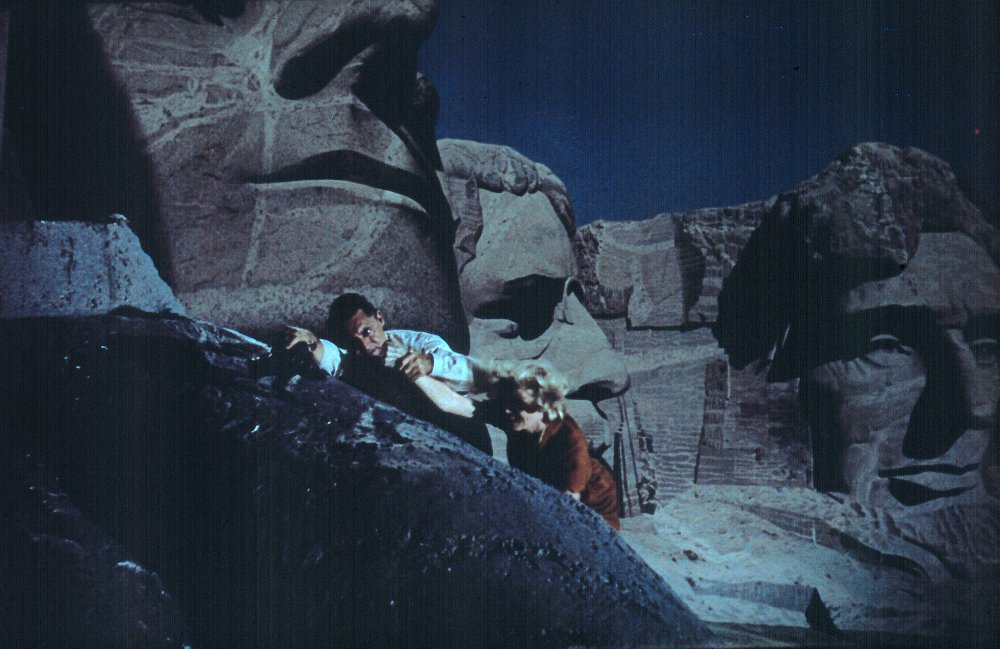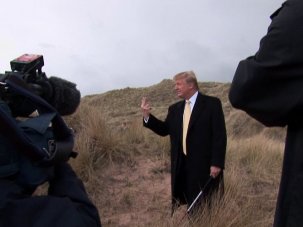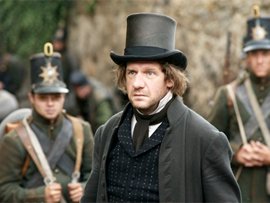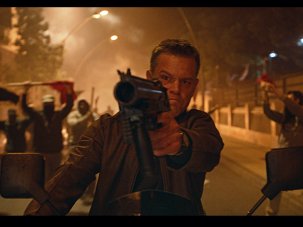Still reeling from the announcement that Donald Trump is America’s new President? Unsure how to account for this extraordinary event? You could do a lot worse than consider two films released in 1959 and 1962; North by Northwest – the last, and perhaps the greatest, of Alfred Hitchcock’s chase thrillers – and Dr. No, the first entry in the James Bond series.
It will surely be obvious that Hitchcock’s masterpiece provided the template for the Bond franchise; indeed, it may well have been a more decisive influence than those Ian Fleming novels the films are (usually quite loosely) adapted from. Yet the differences between these two bodies of work seem to me far more significant, testifying as they do to a fundamental shift in the way audiences relate to narratives. Hitchcock’s cinema relied on studio sets and matte paintings, but was nonetheless linked to the oeuvres of Roberto Rossellini, Jean Renoir and Mizoguchi Kenji in its humanist evocation of a world beyond the frame. The Bond films, much as they might have utilised genuine locations, positioned themselves within hermetic entertainment realms, the disavowal of reality serving as a guarantee that nothing would be permitted to spoil the atmosphere of consequenceless amusement.
North by Northwest’s protagonist, Roger Thornhill (Cary Grant), is an advertising executive initially characterised by his superficial outlook. The trials he subsequently undergoes are not inert spectacles designed to provide momentary thrills, but stages in the process by which he learns a series of lessons in responsibility, culminating in his newfound ability to enter into a relationship based on mutual respect rather than frivolous desire. His trajectory is one of increasing powerlessness. He can only survive by rejecting those representatives of traditional authority who are using him to achieve their own ends.
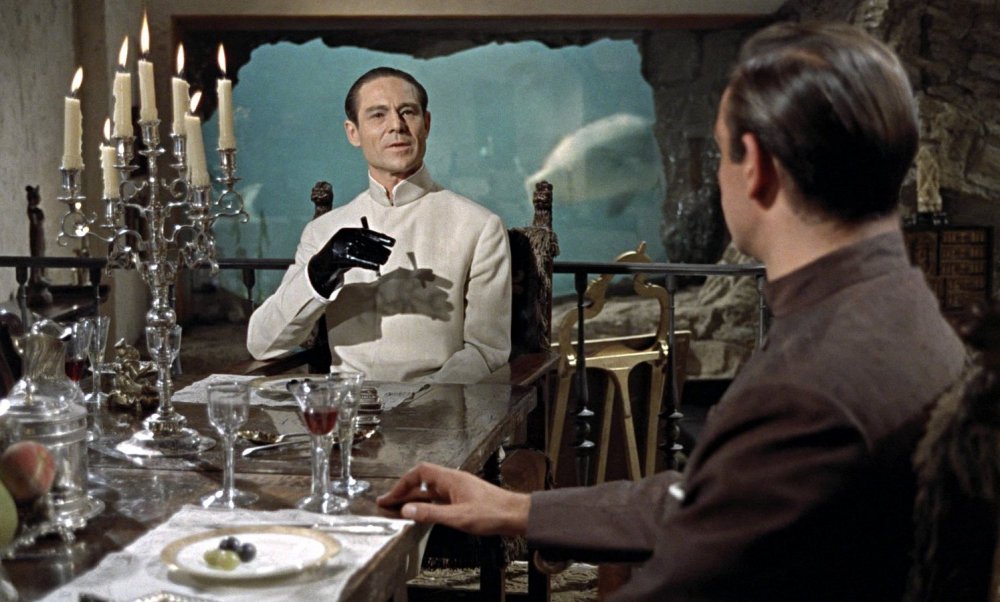
Views from nowhere: Dr. No (1962)
Dr. No, on the other hand, focuses on a hero (and the fact that we can unproblematically refer to him as a hero, a word which could never be applied to Thornhill, is itself revealing) who moves effortlessly from one event to another, knowing no more at the end of his adventures than he does at the beginning. Nothing is at stake, either for Bond or the audience. His trajectory is one of power. His actions have a moral weight because they are carried out in the name of both established institutions and those narrative codes which support and reinforce them. Thornhill’s experiences involve us because they relate, however indirectly, to our own, whereas Bond is more like a train we board in the expectation that it will transport us efficiently to our destination, or a video-game avatar.
The missing link between Bond and video games might well be Game of Death, an unfinished kung fu film shot by Bruce Lee in the autumn of 1972. Lee abandoned this project – of which he was writer, director and star – to act in Robert Clouse’s Enter the Dragon (1973), intending to resume production soon after. In the event, Lee’s death on 20 July 1973 resulted in Game of Death being shelved for several years.
It was resurrected in 1978, when 11 minutes of Lee’s footage was incorporated in a new film directed by Clouse, which bore the same title but ignored Lee’s screenplay. The bulk of this material consists of a sequence in which Lee’s character, Hai Tien, accompanied by two companions, enters a pagoda containing five levels, every one of which is guarded by a lone martial-arts expert. Only after he has defeated each fighter can Tien proceed to the next level, the ultimate goal being to take possession of a treasure located at the top of the pagoda. Precisely how this extended action set piece would have played in the context of the rest of the film is impossible to say: Lee did complete several scenes establishing that Tien was being blackmailed by Korean gangsters who had kidnapped his sister and younger brother, thus obliging him to lead the raid on the pagoda, but these have not as yet been publicly screened (there are brief glimpses of them in John Little’s documentary Bruce Lee: A Warrior’s Journey).
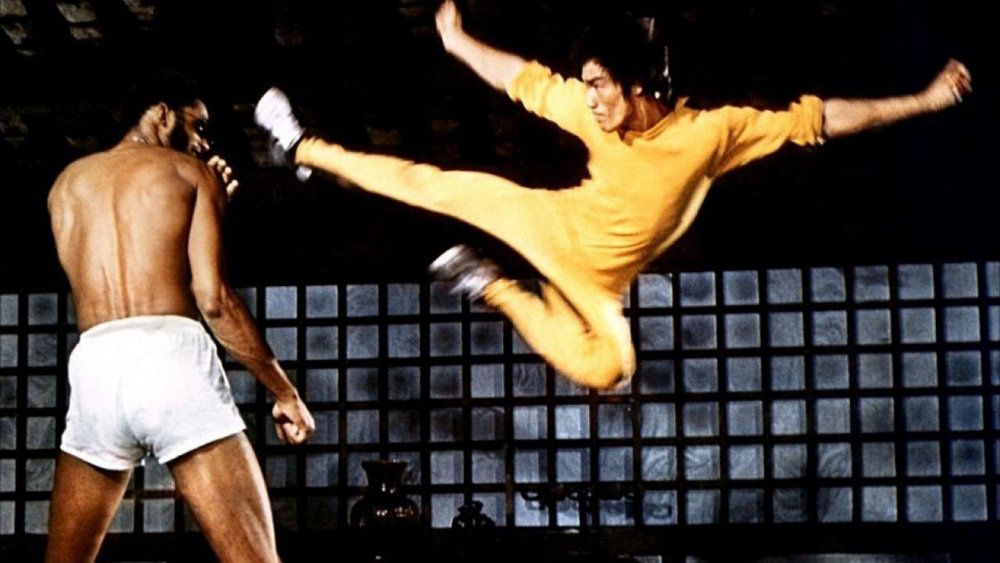
Level up: Bruce Lee in Game of Death (1972/78)
What we do have access to (in both A Warrior’s Journey and as an extra on the DVD of Clouse’s Game of Death) is a reconstruction, running 39 minutes, of the pagoda sequence as Lee intended it (minus the fights on floors one and two, which were never filmed). Detached from both the narrative imposed by Clouse and the one intended by Lee himself, this fragment recalls James Bond’s stylised battles while strikingly anticipating those video games in which a player-controlled figure must meet a series of challenges merely so he or she can move up to the next level, where another challenge awaits. If the journey from set piece to set piece imposed complex emotional and performative requirements on Roger Thornhill, Bond’s struggles were completely superficial, his passages being smoothly accomplished by means of first-class travel arrangements (or their stylistic equivalents). But Game of Death is even neater; once Tien has completed his task on one level, all he must do to reach the next is climb a short flight of stairs.
It will hardly be necessary to point out that variations on this structure can be found in most of those action films which dominate Hollywood’s recent output. Indeed, the idea that a scene only exists so that characters and viewers can proceed to the next has been normalised by the popularity of franchise filmmaking; now, each franchise movie only exists as a set-up for the next entry (a concept taken to dizzying extremes by the current craze for interlocking superhero sagas). Game of Death even provides a precedent for the Saw series, in which characters make their way from room to room by playing potentially lethal games, or Quentin Tarantino’s Kill Bill (2003/2004), in which Beatrix Kiddo (Uma Thurman), whose yellow track suit is borrowed from Lee’s film, must defeat several underlings, each of whom is encountered in a self-contained ‘chapter’, before taking revenge on her main tormentor.
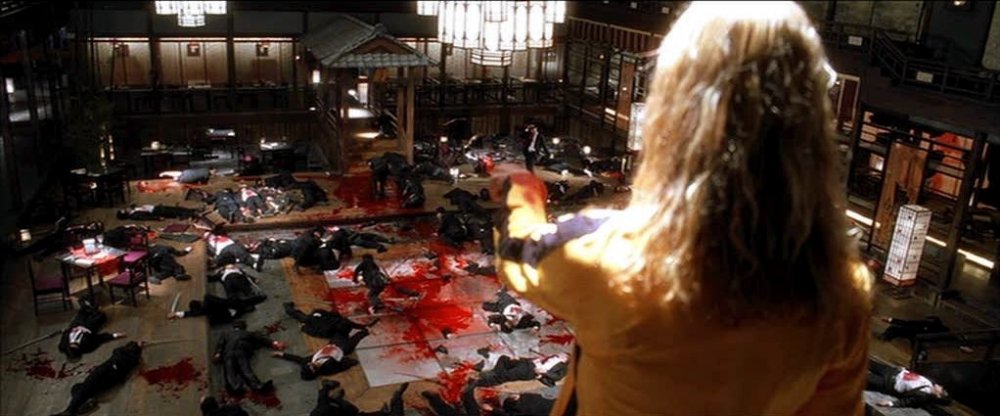
Uma Thurman completes another challenge in Quentin Tarantino’s Kill Bill Vol. 1 (2003)
Yet the shadow of both Bond and Game of Death also hovers over much of what we regard as arthouse cinema. Take Matthew Barney’s Cremaster 3 (2002), which contains an extended sequence, entitled The Order, wherein a character identified onscreen as The Entered Apprentice (played by Barney himself) ascends to the spiral of New York’s Guggenheim Museum, passing through five floors on which he encounters ‘guests’ from the worlds of art (Richard Serra), music (Agnostic Front and Murphy’s Law), dance (The Rockettes) and sport (Paralympic track star Aimee Mullins, whom he fights to the death). On each floor, the Apprentice must carry out an apparently purposeless task, the sole object being to reach the highest level.
Then there’s the work of Alexander Sokurov, which frequently involves spaces so abstract they give the impression of existing only for as long as the camera lingers on them, dissolving the moment it goes on to something else. Russian Ark (2002) is perhaps the masterpiece in this vein, but, for my present purposes, Faust (2011) seems far more relevant. This highly selective reading of Goethe’s play reconfigures Faust as a Nietzchean Übermensch moving through a series of locations that, thanks to Sokurov’s mise en scène (which makes frequent use of distorting lenses), function primarily as externalisations of the peculiarly unmotivated protagonist’s internal struggles.
His passage, accompanied by the mephistophelean pawnbroker Müller, from bath-house to tavern to Margarete’s house to church recalls James Bond’s journey from one skirmish to another, or Hai Tien’s voyage through the pagoda, and if the suggestion that Faust’s odyssey is indeed pointless (something the Bond series could never explicitly acknowledge) gives the film an existential dimension, this only ends up reinforcing the project’s solipsism. Sokurov imagines himself to be highly critical, even contemptuously dismissive, of Faust, but such criticisms as he has to offer are ultimately undermined by the adoption of a structure which supports and reinforces the assumptions of his central character, who is as disconnected from the concerns of those who have the misfortune of not being him as each scene is from the one before it, as each location is from the one that precedes it. When last seen, Faust is staggering across a bleak landscape, responding to the Godlike voice that asks where he is going by shouting, “Further and further!”
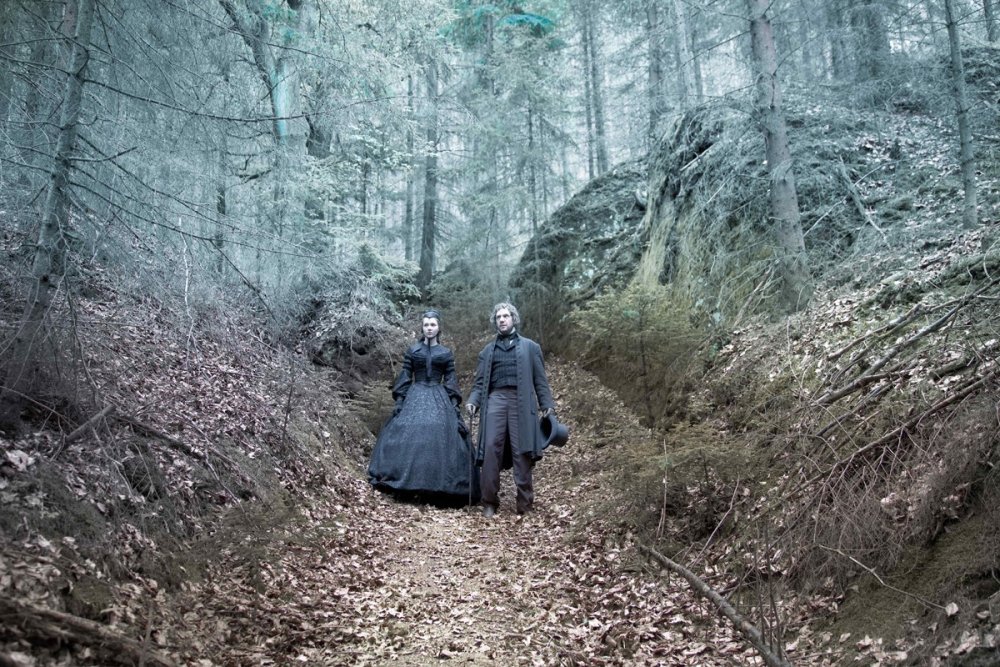
Further and further: Faust and Margarete in Alexander Sokurov’s Faust (2011)
To go “further and further” is the only conceivable goal of James Bond, Hai Tien, and The Entered Apprentice. But this concept may also provide the best explanation we have for Donald Trump’s decision to seek the Republican nomination (and if the leap from Sokurov to Trump seems an unwieldy one, we might recall that Vladimir Putin personally helped Sokurov raise the money for Faust, and is thought to have played a similar behind-the-scenes role in the US election).
Unlike Hillary Clinton, who has been focused on winning the presidency for the last decade, Trump’s move into the political arena would appear to be motivated by a whimsical desire to see just how far he could go; “let’s see what happens” was a phrase often used in reference to his campaign. Trump was concentrating less on an ultimate goal than on moving from one stage to the next. And, bolstered by the perception that his candidacy was inherently absurd, voters have been more than willing to support him. To them, voting for an icon of reality TV must have seemed no more consequential than voting for one of the contestants in a reality TV show, particularly since political battles are now largely fought in televisual formats (the debates Trump participated in being staged for the camera).
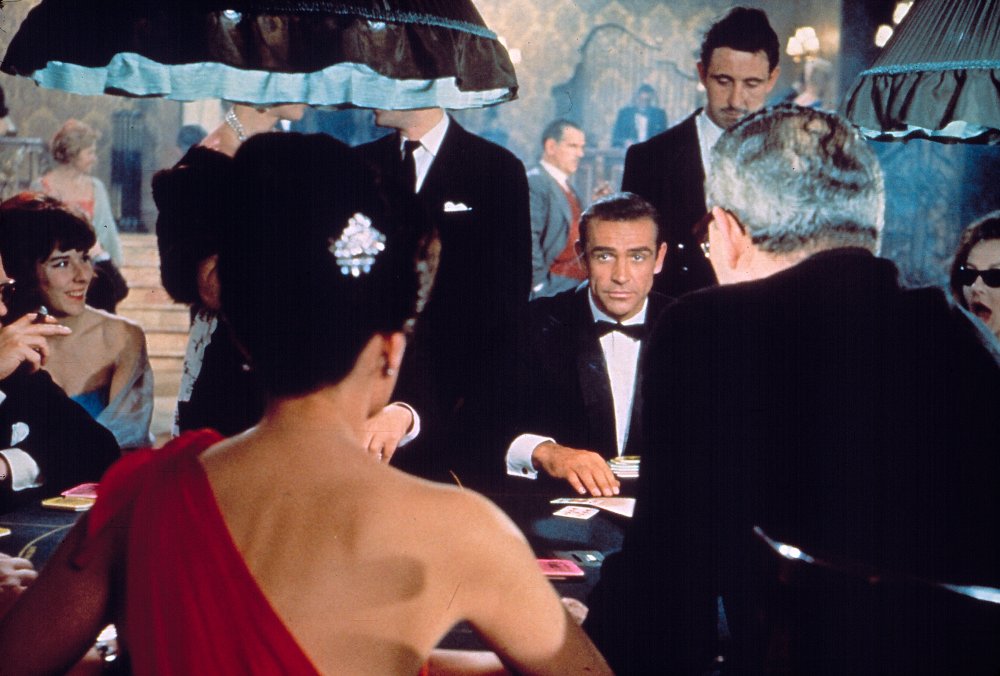
Sean Connery’s James Bond in Dr. No: a first-class power trip?
Which brings us back to that split between the popular cinema of North by Northwest and the superficially similar yet fundamentally different one represented by Dr. No. If Clinton was a Hitchcockian politician, her campaign rooted in comprehensible goals and notions of responsibility, Trump was the James Bond candidate, not merely in his nostalgia for those notions of unreconstructed masculinity evoked, with a sly wink that implies nobody is really taking any of this seriously, by the Bond films (though that, of course, was a fundamental aspect of his appeal), but rather in his refusal to accept that anything might connect with anything else. His multiple changes of position, as well as denials of statements which were a matter of public record, were seen less as a liability than as an intrinsic part of his message. Like Bond passing from set piece to set piece, Hai Tien moving from one floor to the next, The Entered Apprentice ascending several levels of the Guggenheim, and Faust proceeding from one abstract environment to another, Trump saw everything that came before as erasable. From this perspective, the future, particularly a future in which one’s ostensible goal has been achieved, must be as abstract and incomprehensible as the past, Trump’s blank expression (oddly reminiscent of Dustin Hoffman’s at the end of The Graduate) during his meeting with Barack Obama after the results of last year’s election had been announced speaking volumes about the emptiness of this worldview.
America is virtually unique in being a country founded on ideas, as opposed to one which developed ideas that had some pragmatic relationship to an already existing reality. And this perhaps accounts for the feeling of horror many of us experience as we contemplate Trump’s presidency. For what other emotion would be adequate to the prospect of seeing a country suddenly erase itself, winking out of existence, returning to that universe of abstract notions from which it emerged? We are left not with Roger Thornhill celebrating his marriage to Eve Kendall (Eva Marie Saint), but rather with the spectacle – post-modern, post-narrative and post-truth – of James Bond wondering where he can possibly go once the end credits have finished rolling.
Perhaps Stanley Kubrick’s The Shining (1980) – with its vision of America as a haunted house wherein an angrily domineering white male explores a series of self-contained rooms, a blank stare accompanying the revelation that he is caught in a meaningless and inescapable cycle of repetition – will prove the most telling portrait we have of the Trump era.
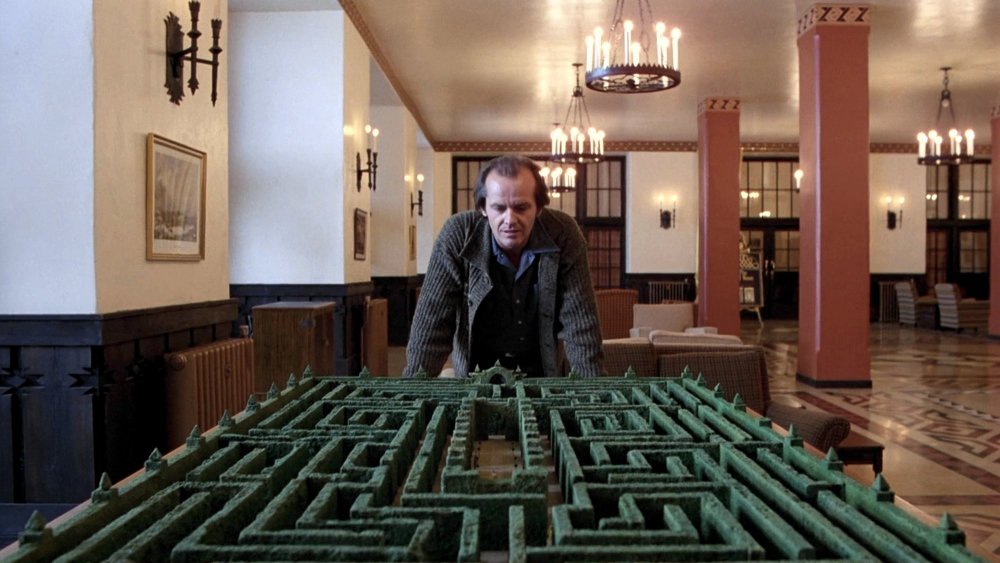
Jack Nicholson in Stanley Kubrick’s The Shining (1980)
-
The Digital Edition and Archive quick link
Log in here to your digital edition and archive subscription, take a look at the packages on offer and buy a subscription.




